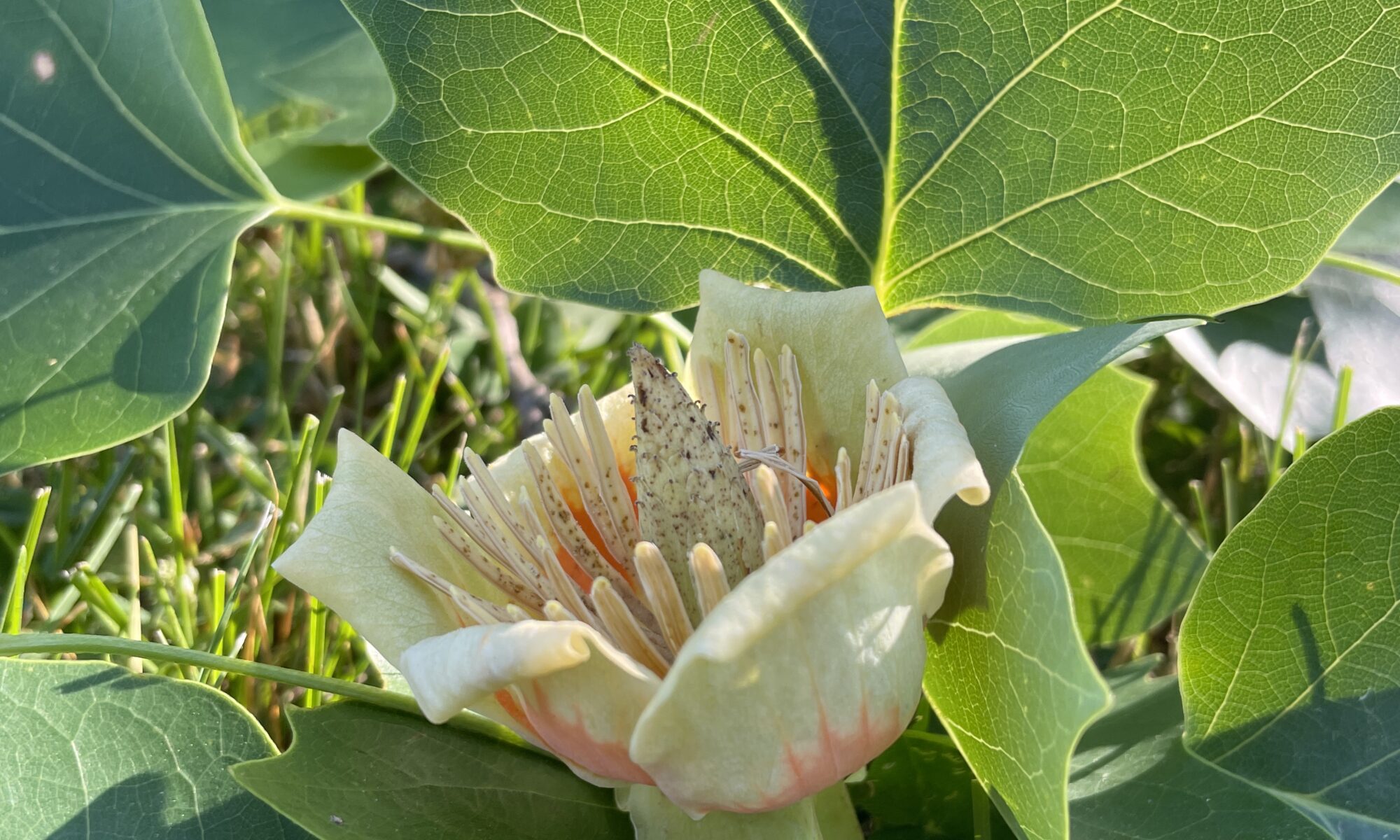
UT Gardens’ February Plant of the Month
Submitted by Jason Reeves, Horticulturist, UT Gardens, Jackson, and West Tennessee AgResearch and Education Center
Named for its distinctive tulip-shaped blooms, our state tree is the tulip poplar (Liriodendron tulipifera). It’s a beautiful tree and can be found in every county in Tennessee. As North America’s tallest native deciduous tree, it can mature to more than 150 feet and half as wide. Michael Dirr, in his “Manual of Woody Landscape Plants,” says it’s “truly an aristocrat tree.” Large mature examples can be found throughout the state, including the Great Smoky Mountains National Park.
In the landscape, tulip poplars tend to grow around 70 feet tall and make good shade trees. They are fast growing especially when young. In addition, they are drought-tolerant once established. At home, they are best grown in good soil where supplemental water can be provided in long periods of drought. This can help to prevent early leaf drop.
The five to eight-inch, tulip-shaped leaves are bright green and turn gold in early fall. They are thin and break down quickly after falling from the tree. Honeydew falling from aphids feeding on the leaves can sometimes be a problem, so they are best planted away from automobiles or patios. Gardeners will need to look up to see flowers, as they are often overlooked due to their height in the canopy. Each flower is made up of six greenish-yellow petals with orange near the base. Flowers are frequented by tiger swallowtail butterflies, bumblebees and hummingbirds.
Many aspects of the tulip poplar make it easy to identify. Its straight trunk is covered in strips of light gray, long, furrowed bark. Stems have duck-bill-shaped buds and tulip-shaped leaves. Flowers also are tulip-like, resulting in a 2-to-3 inch cone-shaped seed spike that sets it apart from other trees.
Tulip poplar can be seen growing in several locations at the Gardens in Knoxville and Jackson. If you don’t have room for the straight species or you’re looking for something a little different, you may want to consider ‘Arnold.’ This columnar variety is great for smaller spaces. There also is a variety named ‘Little Volunteer’ that grows half the size of straight species. Our state tree is both beautiful and versatile in the landscape. Don’t overlook it when choosing trees for your landscape.
The UT Gardens includes plant collections located in Knoxville, Crossville and Jackson, Tennessee. Designated as the official botanical garden for the State of Tennessee, the UT Gardens are part of the UT Institute of Agriculture. The Gardens’ mission is to foster appreciation, education and stewardship of plants through garden displays, educational programs and research trials. The Gardens are open during all seasons and free to the public.